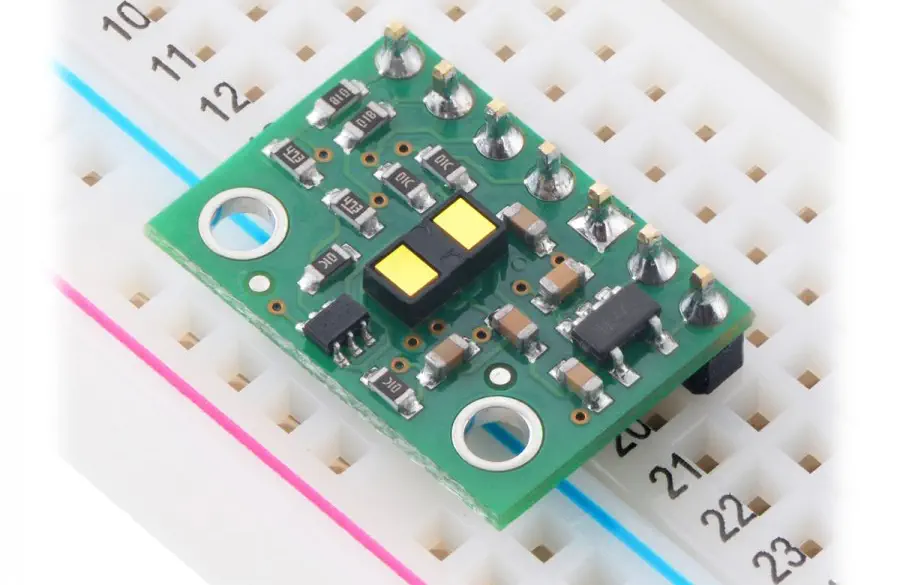Pagos y Seguridad
Su Información de Pago se procesa de forma segura. No almacenamos los datos de la tarjeta de crédito ni tenemos acceso a la información de su tarjeta de crédito.
Descripción
- 1 x Placa Adaptadora de Sensor de Telémetro ToF con Regulador de Voltaje - VL53L1X
- 0,5" × 0,7" × 0,085"
- Peso: 0,5 g
Archivos PDF
- Placa Adaptadora de Sensor de Telémetro ToF con Regulador de Voltaje - VL53L1X – Ficha de datos 1
- Placa Adaptadora de Sensor de Telémetro ToF con Regulador de Voltaje - VL53L1X – Ficha de datos 2
- Placa Adaptadora de Sensor de Telémetro ToF con Regulador de Voltaje - VL53L1X – Ficha de datos 3
- Placa Adaptadora de Sensor de Telémetro ToF con Regulador de Voltaje - VL53L1X – Ficha de datos 3
- Placa Adaptadora de Sensor de Telémetro ToF con Regulador de Voltaje - VL53L1X – Esquema 1
- Placa Adaptadora de Sensor de Telémetro ToF con Regulador de Voltaje - VL53L1X – Esquema 2
- Resolución: 1 mm
- Alcance máximo: 400 cm
- Rango mínimo: 4 cm
- Interfaz: I2C
- Tensión de trabajo mínima: 2,6 V
- Voltaje de funcionamiento máximo: 5,5 V
- Corriente de suministro: 15 mA
Identificación de marcas
- Descriptores de PCB: irs11a
- Otras marcas: 0J9776












